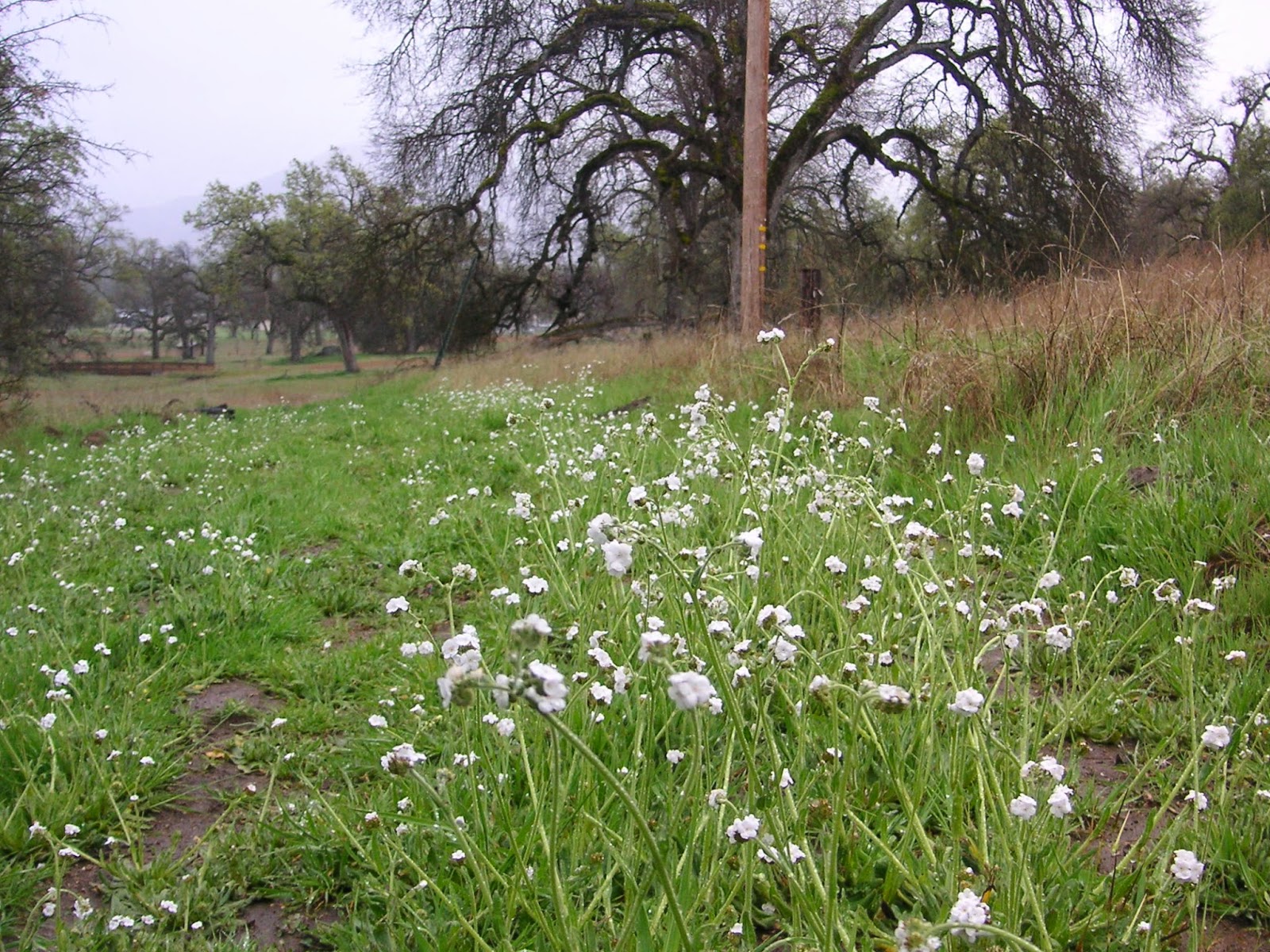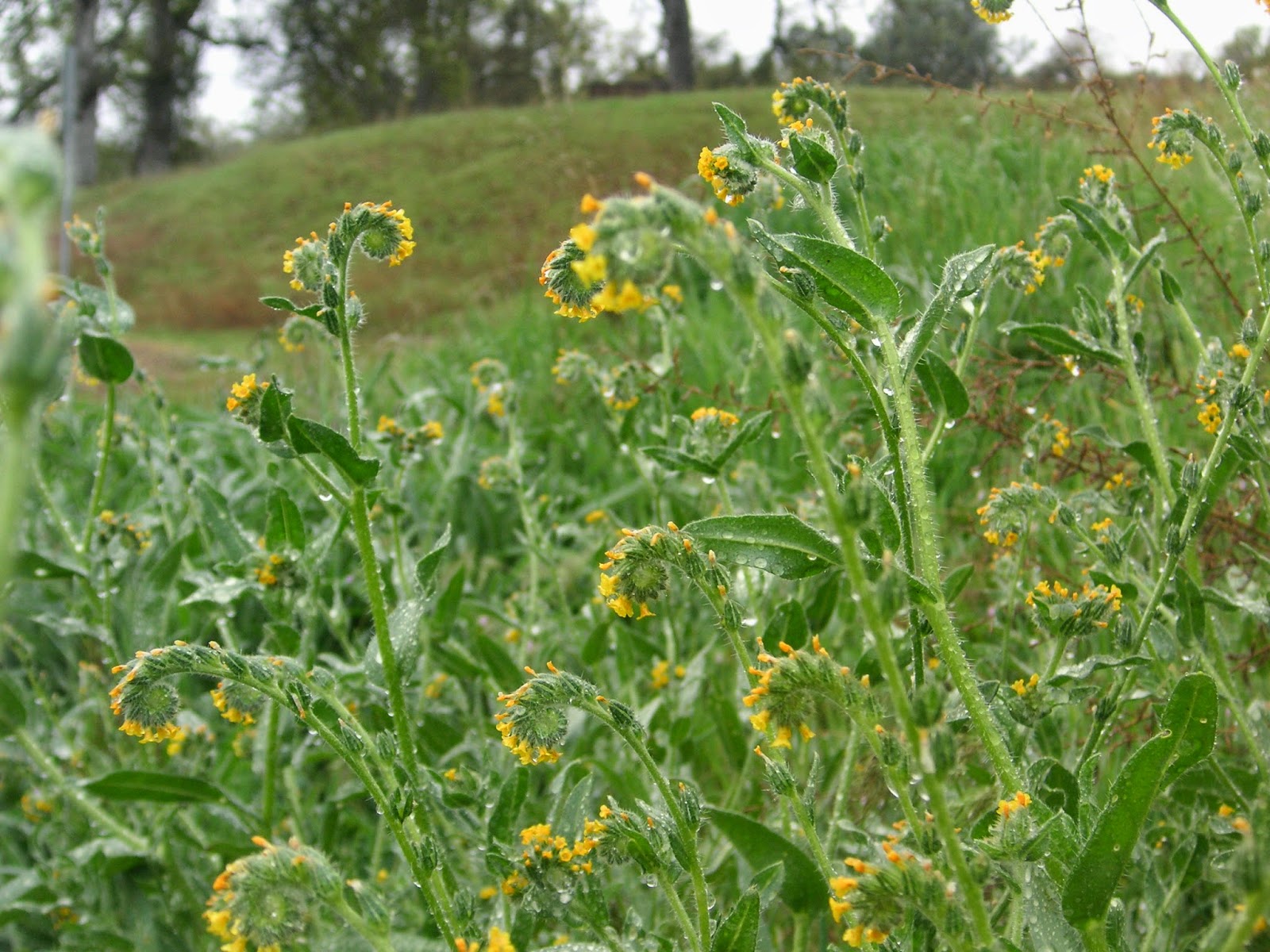Jacks Peak County Park
March 31, 2014
March 31, 2014
posted 04/04/14 - Zowie! The poison-oak is going gangbusters, creeping over everything on the lower slopes of my favorite access trail to Jacks Peak. Within 2 days of this visit, I may have developed my first-ever poison-oak rash. Bummer. They're just little red bumps that itch like crazy, nothing like the oozing sores Andy gets weeks later from his trail running in shorts.
Under all that poison-oak in the first photo, there's also a dusky-footed woodrat stick midden on the fallen trunk. I find it interesting that some of them prefer to build their houses up off the ground. I'm so happy the bright spring green has finally arrived. A little late, but I'll take it. And, thanks to having recently hiked in a different kind of pine forest at Lewis Creek and seeing the contrast, I now recognize there are sections of the access trail that have absolutely nothing growing down below. It feels really old and static in there with feet deep, cushy soft layers of pine needles. The Monterey Peninsula is famously referenced as one of the last remaining stands of native Monterey pine with Jacks Peak crowning it all.


















































